
December 21, 2008
Ten Notable 2008 Cryptozoology Deaths by Loren Coleman, Tom Slick: True Life Encounters in Cryptozoology.
Who did we lose this year in the field of cryptozoology?
The following is a roundup of ten significant personalities in cryptozoology who died in 2008. It includes two Yeti chroniclers, a giant panda discoverer, a Mokele-Mbembe seeker, a Thylacine investigator, a Panther researcher, three Bigfooters, and a Bigfootry mischief maker.
(1) Yeti Hunter Sir Edmund Hillary, 88, died January 11, 2008.

Sir Edmund Hillary, one of the first two men to climb the world’s highest mountain, Mount Everest, was involved in the history of the Yeti since 1952. Hillary’s health had reportedly been in decline since April 2007, after a fall while visiting Nepal. He suffered a heart attack in hospital, near his home in New Zealand.
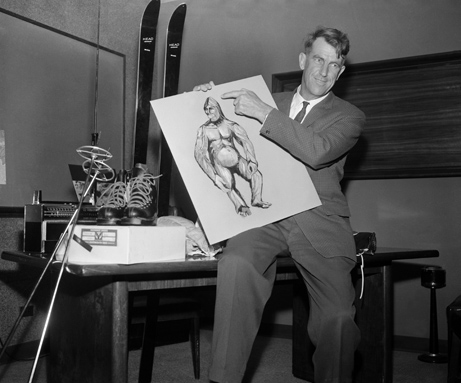
In 1952, Hillary along with George Lowe found hair on a high pass while in the mountains, relating it to Yeti. In 1953, Yeti tracks were found by Hillary in the Barun Khola range. The next year, two British members of Hillary’s team discovered Yeti tracks in the Choyang Valley. His trusted Sherpa friends would tell Hillary of their firsthand sightings of the man-sized Yeti.
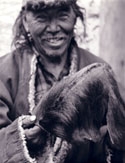
During most of the 1950s, Hillary was a supporter of the existence of the Yeti. Late in 1960, Sir Edmund Hillary, sponsored by the World Book encyclopedia company of Chicago, left on his expedition to Nepal in pursuit of the Abominable Snowman, and ended up debunking the Yeti with some misleading facts.
(2) Yeti Author Tribhuvan Nath, 86, died February 18, 2008.

Tribhuvan Nath is shown at the extreme left, in a white shirt, at a news conference in 2002. Original news sources have incorrectly identified him as the man in the blue shirt, but his daughter Ms. Tripti Nath has forwarded a correction.
The well-known veteran Indian journalist Tribhuvan Nath passed away at his home in Panchkula, near Chandigarh, India. In addition to his newspaper work, Nath had a biological interest in Nepal, which inspired him to co-author a book entitled On The Yeti Trail: Search for the Elusive Snowman (New Delhi/London: UPB Publication, 1994; 119 pages long), with his late contemporary, Madan Mohan Gupta, a correspondent of the UPI. The book raised questions about whether Yetis had already become extinct in Nepal.
(3) Bigfooter Sam Sherry, 86, died February 22, 2008.

Sam Sherry of Wilpen, Pennsylvania, holds plaster casts of Bigfoot tracks that he found in his area.
Pennsylvania Bigfoot researcher Sam Sherry passed away at the Veteran’s Hospital in Pittsburgh. On May 17, 1987, Sherry sighted a Bigfoot near Loyalhanna Creek, which kicked off his life-long hunt for the creatures. His tally included seven sightings in nine years of the same Bigfoot couple – including a white female he named “Snowflake.” Much of his recent evidence was questioned by mainstream investigators.
(4) Mokele-Mbembe Seeker Scott T. Norman, 43, died February 29, 2008.

Scott Norman, a mere 15 days before his 44th birthday, died suddenly in Fullerton, California. His family was told it was an unexplained blood clot. Norman was a cryptozoologist who had taken his passion for dinosaurs, Mokele-mbembe, and prehistoric cryptids, all the way to Africa in February 2001. He was the President of CryptoSafari, a non-profit cryptzoological and scientific research organization. His death was a shock to his family, friends, and research associates.
(5) Giant Panda Discoverer Adelaide “Su-Lin” Young, 96, died April 17, 2008.

Joined by her husband, Jack, left, and brother-in-law Quentin Young is Adelaide “Su-Lin” Young. Photo courtesy of her family.
Adelaide “Su-Lin” Young was born in New York City, was a longtime El Cerrito resident, and died in Hercules, California. She was the subject of books and international press coverage as the first American woman explorer to enter the Tibetan-Himalayan area and as part of the expeditions that brought back the first giant panda to the United States. She became known as the “Panda Lady.”
The woman most linked with finding the first giant panda seen in the West is Ruth Harkness. Harkness wrote, on November 9, 1936, in her diary, that her guide Quentin Young caught sight of a baby giant panda inside an old dead tree, thought to be the den of the cub’s mother. Young handed the cub over to Harkness. The panda was named Su-Lin, after Quentin’s brother, Jack Young’s wife. The first live giant panda had been “discovered.”
The Explorers Walk, an exhibit at the Memphis Zoo, credits Su-Lin Young as one of three explorers who opened the East to the West, along with Marco Polo and naturalist Father Armand David, who is often remembered for Père David’s deer.
(6) Panther Researcher David Maehr, 52, died June 13, 2008.
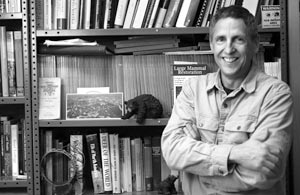
An internationally known expert on the endangered Florida and cryptid eastern panthers, David Maehr, University of Kentucky associate professor, was killed when the single-engine Piper Cub airplane in which he was riding crashed mid-day near Placid Lakes Airport, Florida. The pilot, citrus grove owner Mason Smoak, 33, also died. Maehr was the only passenger.
Within the cryptozoological community, Maehr was known for his work exploring the existence of the eastern puma, and his research on the rediscovery of the Florida panther. Maehr was an Advisor to the Eastern Cougar Foundation.
(7) Bad Boy of Bigfootry Jon-Erik Beckjord, 69, died June 22, 2008.

Bigfoot and Nessie paranormalist Erik Beckjord had prostate cancer and died unannounced for more than a month by the media, near his home in Lafayette, California. His Bigfoot museum was destroyed by the Malibu wildfire in 1993, and his storefront Bigfoot, UFO and Loch Ness Monster Museum existed near Washington Square in San Francisco from 1996-1999. Beckjord remained a controversial figure within Bigfoot circles until his death.
(8) Thylacine Hunter Eric Guiler, 85, died July 3, 2008.
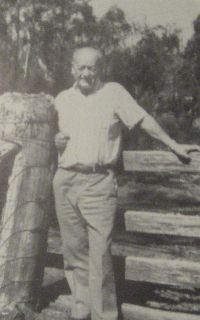
Tasmania’s and the world’s leading authority on Thylacines, Dr. Eric Guiler, passed away after six years of ill-health following a stroke. A little known fact, shared among a few cryptozoologists at the time, was that Guiler suffered his last stroke while out in the bush looking for Thylacine signs. It was feared he was going to die in the field, and had to be carried out over rough terrain to get him help.
Guiler, who was known as Mr. Thylacine, spent much of his life researching the species, Thylacinus cynocephalus (also called Thylacines, Tasmanian Tigers and Tassies). He mounted several major government-backed expeditions in the 1950s and 1960s to search for the elusive Thylacines, before continuing his quests privately, until he suffered his 2002 stroke.
(9) Bigfoot Researcher Tim Cullen, 43, died August 14, 2008.
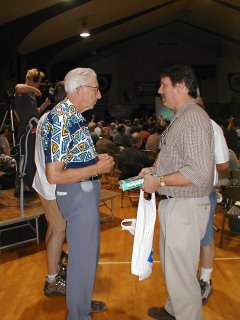
Tim Cullen, right, photographed with John Green, left.
Well-known on Bigfoot online forums, Tim Cullen died suddenly of a heart attack in Panama City, Florida. As a Skunk Ape field investigator, Cullen had been a proud member of the Alliance of Independent Bigfoot Researchers. He was also a former Bigfoot group moderator and curator. He was known as “Fishbone” among his email associates, and recognized for his sense of humor.
(10) Bigfooter Charles Hallmark, 68, died November 24, 2008.
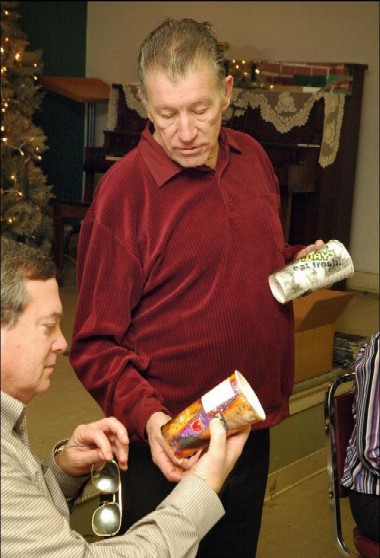
The colorful Charles Hallmark of Sulphur, Oklahoma, a well-known local Bigfoot researcher, passed away in his home state. He claimed several close encounters, the recovery of fingerprints, and finds of many tracks of the alleged hominoids. Hallmark worked for many years trying to prove Bigfoot’s existence.
Our sadness about the departing of all these folks is only counter-balanced by the fact they all added so much to the world of cryptozoological wonder. Goodbye, all.
+++++
Several fine people linked to the popular cultural imprint of cryptozoology passed away too, in 2008, including Ben Chapman, who played the Creature from the Black Lagoon and Forry. View the moving video below that remembers….
About Loren Coleman
Loren Coleman is one of the world’s leading cryptozoologists, some say “the” leading living cryptozoologist. Certainly, he is acknowledged as the current living American researcher and writer who has most popularized cryptozoology in the late 20th and early 21st centuries.
Starting his fieldwork and investigations in 1960, after traveling and trekking extensively in pursuit of cryptozoological mysteries, Coleman began writing to share his experiences in 1969. An honorary member of Ivan T. Sanderson’s Society for the Investigation of the Unexplained in the 1970s, Coleman has been bestowed with similar honorary memberships of the North Idaho College Cryptozoology Club in 1983, and in subsequent years, that of the British Columbia Scientific Cryptozoology Club, CryptoSafari International, and other international organizations. He was also a Life Member and Benefactor of the International Society of Cryptozoology (now-defunct).
Loren Coleman’s daily blog, as a member of the Cryptomundo Team, served as an ongoing avenue of communication for the ever-growing body of cryptozoo news from 2005 through 2013. He returned as an infrequent contributor beginning Halloween week of 2015.
Coleman is the founder in 2003, and current director of the International Cryptozoology Museum in Portland, Maine.
Filed under Cryptomundo Exclusive, Cryptotourism, CryptoZoo News, Cryptozoologists, Cryptozoology, Men in Cryptozoology, Obituaries, Women in Cryptozoology, Year In Review